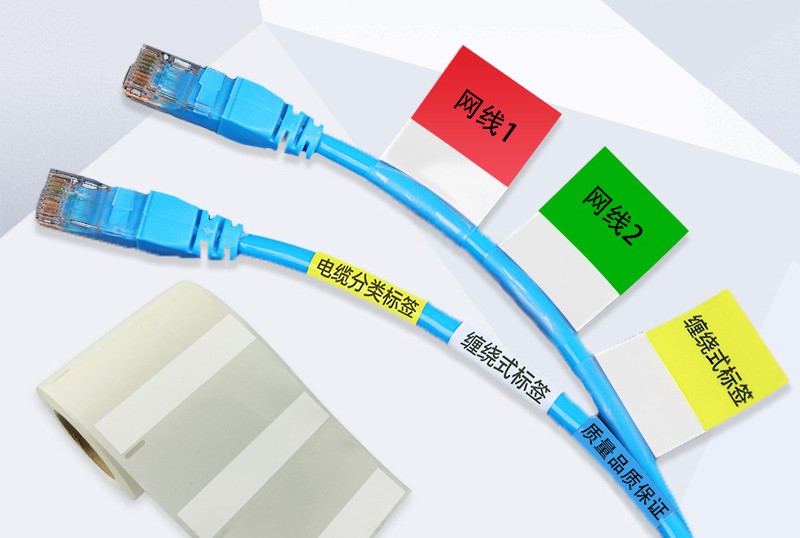In any industry where organization and safety are paramount, the art of effectively tagging cables cannot be understated. From telecommunication firms to high-tech laboratories, the ability to quickly identify and differentiate various cables is a critical aspect of modern infrastructure management. Efficient cable tagging helps in reducing downtime, improving maintenance capabilities, and enhancing overall safety.
Cable tagging comes in various forms to meet diverse environmental and operational needs. Plastic tags are commonly used for their versatility and cost-effectiveness, suitable for indoor settings. Metal tags are robust and designed for industrial use where exposure to extreme conditions is common, while self-laminating vinyl tags provide protection against moisture and chemicals, ideal for challenging environments.
This post will navigate through the types of tags, their applications, functionalities, installation methods, standards, costs, suppliers, and durability to provide a comprehensive view of cable tagging solutions.

Types of Tags
Cable tags come in various forms and materials, each designed to cater to specific environmental conditions and identification needs. The most common types include plastic tags, metal tags, and self-laminating vinyl tags.
Plastic tags are widely used due to their cost-effectiveness and versatility. They are typically available in a range of colors, which aids in quick visual identification. Metal tags, on the other hand, are preferred in environments where durability and resistance to extreme conditions are required. These tags can withstand high temperatures, exposure to chemicals, and are often used in industrial settings. Self-laminating vinyl tags feature a protective vinyl layer that wraps around the cable, making them ideal for environments where moisture and chemical exposure is a concern.
The choice of tag depends on factors such as the environment in which the cables operate, the need for color-coding, and the level of exposure to harsh conditions.
Application Scenarios
Cable tagging finds its importance across various scenarios, from simple office setups to complex industrial environments. In offices, cable tags help in managing IT and communication cables, ensuring that setups remain organized and troubleshooting becomes easier. In industrial applications, such as manufacturing plants or oil and gas facilities, tags must withstand harsh conditions, including extreme temperatures and chemical exposures.
In data centers, effective cable management and tagging are crucial for maintaining large volumes of network cables. Proper tagging ensures that maintenance tasks do not disrupt network operations and helps in quick fault detection and rectification. Similarly, in healthcare facilities, where reliability and safety are critical, cable tags help ensure that medical equipment is properly connected and maintained.

Functionalities of Tags
The primary functionality of cable tags is to provide clear and durable labeling for cables. However, modern tags come equipped with additional features such as barcodes, QR codes, and RFID technology. These features enable digital tracking and inventory management, which are integral for asset management in large organizations.
Tags with barcodes or QR codes can be scanned to retrieve data about the cable, such as its installation date, last maintenance date, and any other relevant documentation. RFID-enabled tags go a step further by allowing cables to be tracked in real-time, enhancing the asset management process and reducing the chances of theft or misplacement.
Installation Methods
Installing cable tags can vary from simple tie-on tags, which are fastened around the cable using cable ties, to heat-shrink tags that form a tight, protective seal around the cable when heat is applied. Adhesive-backed labels are also popular for their ease of installation; they can be simply peeled off and stuck onto the cable surface.
The choice of installation method often depends on the environment and the permanence of the labeling required. While tie-on tags are quick and easy to replace, heat-shrink tags provide a more permanent solution and are ideal for environments where cables may be exposed to movement or tampering.
Standards and Regulations
Compliance with standards and regulations is critical in cable tagging. Various international and national standards specify the requirements for cable labelling to ensure safety, compatibility, and interoperability. For instance, the Telecommunications Industry Association’s TIA-606 standard guides the administration of telecommunications cabling systems.
Organizations must adhere to these standards to ensure safety, facilitate maintenance, and avoid penalties. Additionally, compliance helps in maintaining system integrity and functionality across different systems and setups.
Cost and Suppliers
The cost of cable tags can vary significantly based on the material, technology, and quantity required. It is important for organizations to consider the total cost of ownership, which includes not only the initial cost but also the longevity and maintenance expenses.
Selecting the right supplier is crucial as quality can vary greatly. Suppliers should be evaluated based on their compliance with standards, the range of products they offer, and their reputation in the market. Large orders typically provide economies of scale, reducing the per-unit cost.
Durability and Reliability
Durability and reliability are key considerations when selecting cable tags. Tags should be able to withstand the environmental conditions they will be exposed to, whether it’s extreme temperatures, UV radiation, chemicals, or mechanical wear and tear.
Reliable tagging solutions ensure that labels remain legible and attached over their expected lifespan, which is crucial for safety and maintenance operations. Investing in high-quality, durable tags can reduce long-term costs associated with replacement and downtime due to misidentification or failure.
Conclusion
Understanding the different types of cable tagging and their applications is essential for any organization that relies on extensive cabling systems. By choosing the right tags, adhering to standards, and considering cost and durability, organizations can significantly enhance their operational efficiency and safety.
You may be interested:
- What is the best way to label network cables?
- What is cable and wire identification?
- What are the roles of Labelling in cables?
- Why is labeling cables important?






